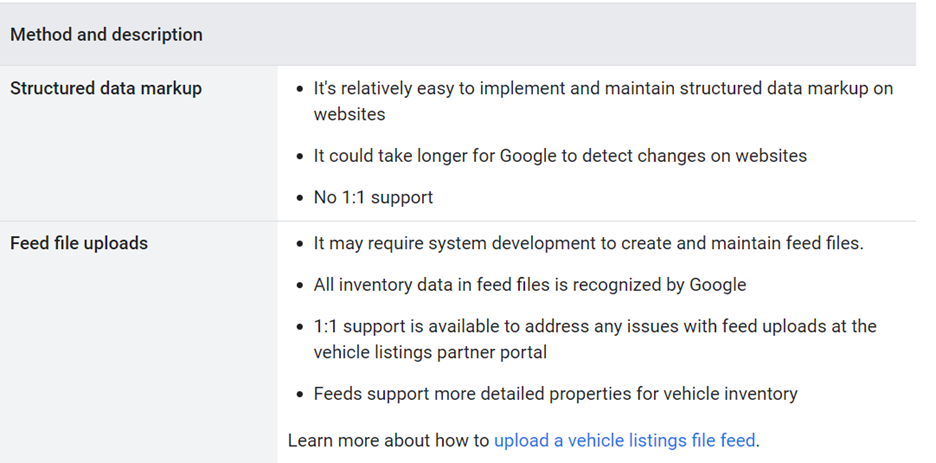The Google Whisperer’s motto has always been “this is Google’s world, and we are all just living in it,” and you can see that right now with Google’s new announcement that dealers can now implement vehicle listing markup themselves. While this may appear to be a valuable service for dealers, a closer examination of the details reveals that the practical impact might be less substantial than anticipated. Let’s dive into the specifics.
Before we get into Google’s most recent update, let’s level-set on all the different places Google puts an inventory in their search results.
There are two major parts of the search results where a vehicle feed can come up. At the top of the search engine results page (SERP) is the carousel of vehicles that can display for certain searches. Setting up Performance Max with Vehicle Ads, otherwise known as Vehicle Listing Ads (VLAs), requires setting up the dealer’s inventory feed in Google’s Merchant Center and then leverage that feed in the Google Ads setup.
The second part of the SERP to look at is a dealer’s Google Business Profile (GBP) listing. Google’s update this week only applies to this section. Historically, an advertising or website vendor would partner with the dealer to send an inventory feed off to Google. Within the Google Business Profile, dealers can indicate which company they want as their inventory feed provider.
So, what did Google change? With this week’s update Google says anyone can now update their site and submit vehicle structured data for GBP. What does that mean? First, Google is not going away from the existing feed file uploads they are just introducing a second method to submit data to GBP for a feed. Looking at the documentation of this new feature, if you move to this manual approach, you lose technical support, and you can submit fewer items than a feed and have no control over when Google recognizes and displays the data. A dealership moving to the manual entry of structured data is also going to have to take on all the tech debt of coding and implementation, if the platform even allows it.

This new feature comes with some big red warnings that don’t actually mean there’s an error, which is why every dealer needs to pay attention. Google has now added a new section in Search Console for vehicle listings and will try and tell you every time their crawler believes there is an error. But is it really an error? Looking at an example, Google is telling us that they can’t find a VIN with any vehicle on the website, which seems odd. Clicking in, Google just selects random lines of code, and not at all where the VIN is found in the code. Remember, manual structured data has no support offered so there’s no place to tell Google about the error.


This happens throughout Google’s new report. It will say things like “new” is not a type of condition for a vehicle or that “4WD” is not a drive wheel configuration. We know that the report is incorrect, but Google does not have a way to say they don’t understand. The same site that can pass the schema.org test with hundreds of items marked up correctly fails Google’s new report with over 1500 “errors.”
So how should you manage this for your dealership? By ignoring the emails Google will send saying you have errors that need to be resolved. This update is for the independent car dealers and not a franchise dealer selling new cars. At Ansira, we have offerings for helping dealerships syndicate inventory for the organic vehicle listings. We also can help syndicate inventory feeds for Performance Max with Vehicle Listings for any advertising provider. Reach out today to learn more about how Ansira can help.

